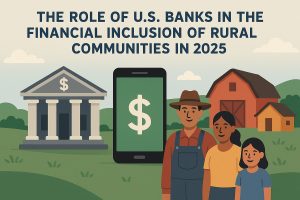The United States housing market plays a pivotal role in the nation’s economy, influencing individual financial stability and broader economic trends. However, shifts in monetary policy, particularly rising interest rates, have a profound impact on this critical sector. As interest rates climb, they ripple through the housing market, altering affordability, reshaping buyer behavior, and influencing housing supply dynamics.
Understanding these effects is crucial for stakeholders, from potential homebuyers to policymakers and real estate professionals. This article delves into how rising interest rates affect the US housing market, focusing on their impact on affordability, buyer decisions, and supply-demand dynamics. Each of these elements is interconnected, creating a complex web of outcomes that define the state of the housing market during periods of rate hikes.
The role of rising interest rates in housing affordability

Higher interest rates directly impact mortgage costs, reducing the affordability of homes for many buyers. When rates increase, monthly payments rise, making it harder for first-time buyers or those with lower incomes to qualify for loans. For instance, a 1% hike in interest rates can add hundreds of dollars to monthly payments on a typical home loan, significantly narrowing the pool of eligible buyers.
This reduction in affordability often leads to a cooling effect on housing markets, as fewer people can purchase homes. Lower demand can stabilize or reduce home prices in certain areas, but it also discourages sellers, who may hesitate to list their properties in a declining market. Moreover, affordability challenges disproportionately affect younger buyers and those in regions with already high housing costs, such as California or New York.
The effect of rising interest rates is not limited to homebuyers. Renters also feel the pinch, as fewer individuals transition to homeownership, increasing competition in the rental market. Consequently, rents may rise, creating a ripple effect on overall housing costs. Affordability, therefore, remains a central concern when analyzing the implications of higher interest rates on the housing market.
Shifting buyer behavior: trends in decision-making
Rising interest rates often reshape buyer behavior by altering perceptions of value and urgency. Potential buyers may feel pressured to secure a home before rates climb further, leading to a temporary surge in market activity. However, as rates continue to rise, many buyers adopt a “wait and see” approach, delaying their purchases in hopes of more favorable conditions.
This hesitation creates uncertainty in the market. For sellers, the reduced pool of active buyers translates to longer listing times and increased price negotiations. Real estate agents and brokers may also face challenges as fewer transactions occur, impacting their income and industry stability.
Decision-making adjustments: financial priorities
Higher borrowing costs force buyers to reassess their financial priorities. Some may opt for smaller, less expensive homes, while others may prioritize suburban or rural properties with lower price tags. This trend can reshape regional markets, driving demand in areas previously overlooked.
In some cases, buyers may turn to adjustable-rate mortgages (ARMs) as an alternative to fixed-rate options, seeking lower initial payments despite potential risks of future rate adjustments. Such decisions reflect the broader financial strategies buyers adopt to navigate high-interest environments.
How supply-demand dynamics evolve with rising rates
Rising interest rates create notable shifts in the supply-demand equation within the housing market. On the supply side, fewer homeowners are inclined to sell when rates are high, especially if they secured low fixed-rate mortgages in the past. This reluctance to move contributes to a decline in housing inventory, limiting options for buyers. Additionally, homeowners may opt to renovate or expand their existing properties rather than selling and facing higher financing costs for a new home, further tightening supply.
On the demand side, higher rates reduce the number of qualified buyers, leading to softer demand. While this could balance prices in the long term, the short-term effect is often market stagnation. Sellers may withdraw properties from the market if they cannot achieve their desired prices, further exacerbating inventory issues. Moreover, first-time homebuyers, who are more sensitive to interest rate changes, may delay entering the market, impacting overall demand and transaction volume.
The role of new construction
The construction sector also faces challenges. Rising borrowing costs increase expenses for developers, slowing the pace of new housing projects. This slowdown adds to inventory constraints, particularly in regions experiencing population growth. Additionally, higher financing costs and inflation drive up the price of building materials, further discouraging new projects and making housing affordability an even greater challenge.
At the same time, developers may shift focus to building smaller, more affordable housing units to attract cost-conscious buyers. This adaptation could help alleviate some inventory shortages in lower price brackets, but it is unlikely to fully offset the impact of slowed construction in higher-end or larger housing categories.
Regional disparities in impact
The effects of supply-demand shifts are not uniform. Markets in high-demand areas, such as major metropolitan regions, may experience less price flexibility due to persistent demand. Conversely, markets in less populous or economically stable areas may see sharper declines in activity and pricing. In some regions, economic conditions and job growth can moderate the impact of rising rates, allowing demand to remain relatively stable.
However, areas heavily dependent on industries sensitive to interest rate fluctuations, such as manufacturing or tourism, may experience more pronounced slowdowns. These regional disparities underscore the importance of local economic factors in shaping housing market trends, creating uneven outcomes across the country.
Rising interest rates profoundly influence the US housing market, creating ripple effects that reshape affordability, buyer behavior, and supply-demand dynamics. As borrowing costs increase, many prospective homebuyers face heightened financial challenges, often reevaluating their ability to enter the market or adjusting their purchasing preferences.
Sellers, on the other hand, contend with reduced buyer activity and potentially longer listing times, prompting shifts in pricing strategies. These changes can lead to a cooling of market activity, yet they also open the door for innovative approaches to financing and transaction structuring.
For industry stakeholders, including real estate agents, developers, and lenders, the evolving landscape presents both obstacles and opportunities. Policymakers must also address these impacts, balancing the need for monetary tightening with housing market stability. In such a rapidly changing environment, understanding the interconnected effects of rising interest rates is essential for fostering informed decision-making and ensuring long-term market resilience.
Marcello Barbosa
Marcello works as a writer and copywriter, holding a degree in Marketing from Unopar. His passion for writing and sharing high-quality information with the world is evident. Additionally, he also enjoys one of his hobbies: online gaming.






